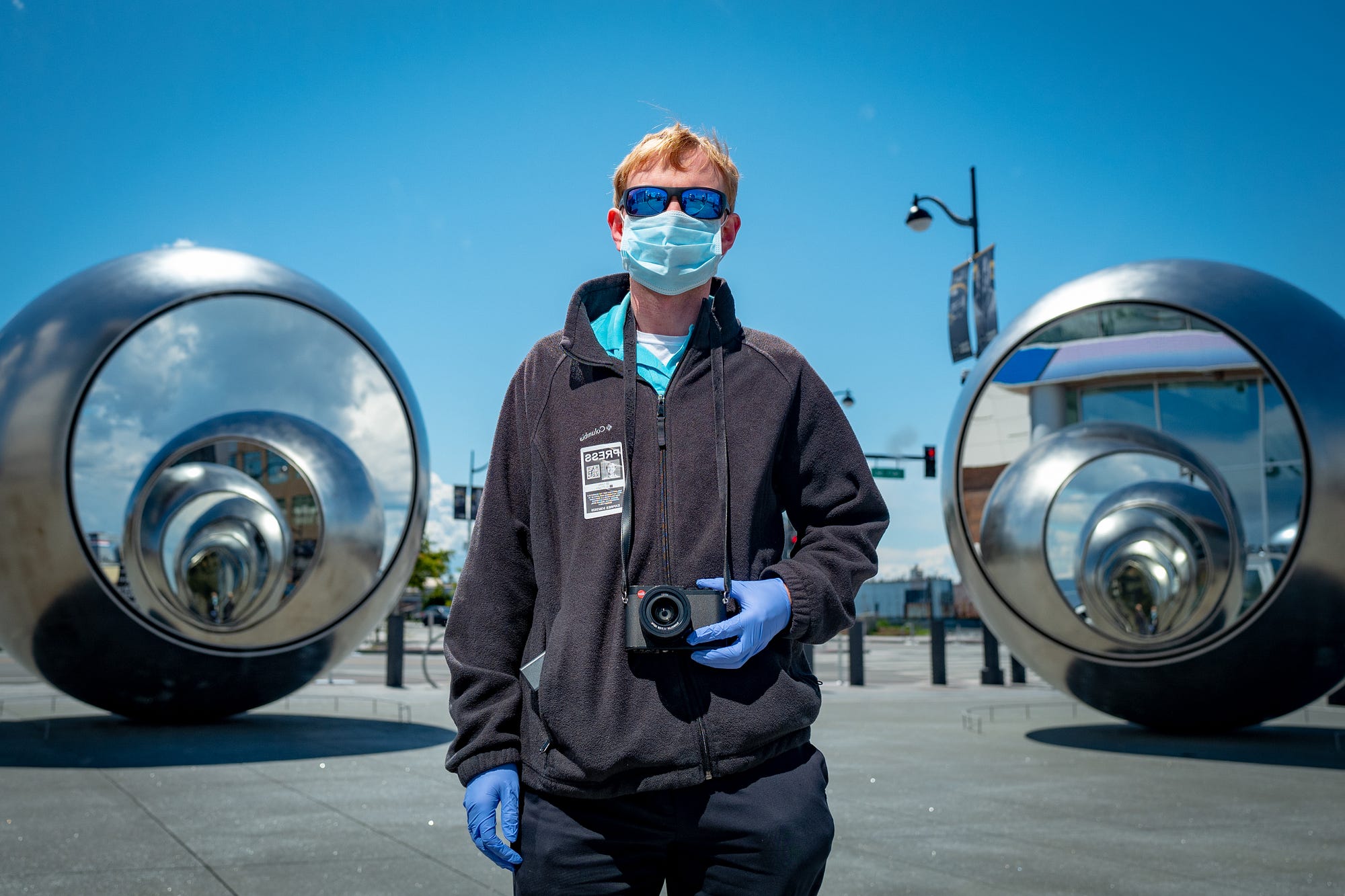
As a professional photographer, the Bay Area is my beat.
I’ve shot the headquarters of Silicon Valley’s tech giants and its smallest, strangest startups. I’ve covered San Francisco’s Michelin-starred restaurants and the culture of wine country (journalistic sacrifices, I know). I’ve chased down self-driving cars, Lime scooters, and surprisingly pushy delivery robots. I’ve gathered historical photos of the city from the dusty basements of aging Victorians and major institutional archives alike.
I’ve documented the exciting aspects of the region but also its major challenges: the treatment of our homeless population, soaring housing costs, and more. I’ve embedded as a DoorDash driver and produced a series of photos that landed in the New York Times, Forbes, and Newsweek.

The Bay Area is an integral part of my life — personally, professionally, and creatively.
Lately, work has been… weird.
In normal times, a typical shoot often involves walking around one of San Francisco’s buzzing neighborhoods. I shoot in a documentary style, informed by my background in sociocultural anthropology.


For that reason, I try to be as inconspicuous as possible. I don’t tote around a giant DSLR. My main camera is a Leica Q, an impossibly complex feat of engineering, hand-assembled one at a time by fastidious engineers in Wetzlar, Germany. The Q manages to pack a full pro-camera sensor and one of the world’s best lenses into a package that weighs 1.4 pounds. It looks less like a professional news camera and more like the kind of retro photographic artifact you find decorating an Airbnb.
Wearing it around my neck, I look like just another hipster with some elaborate throwback bling — the perfect disguise, it turns out, to blend into a San Francisco crowd and catch it unaware.
Lately, though, I’ve added another element to my kit — a pair of purple-ish nitrile gloves and a surgical mask (purchased before the crisis). Everything in the city — and the world — has turned to Covid-19. And thus, so has my work.
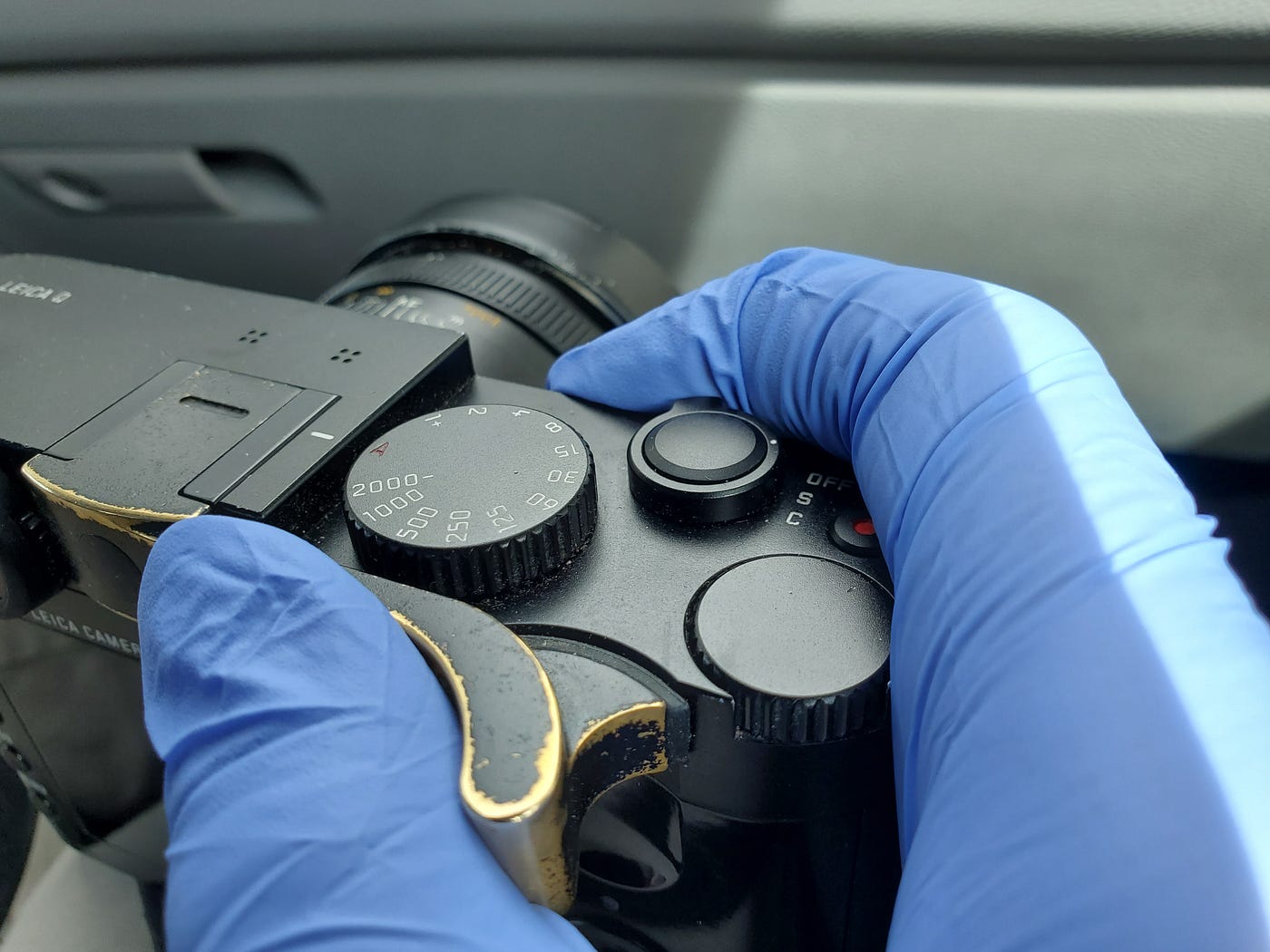
As a journalist, I’m exempt from the shelter-in-place order; media is a business deemed “essential.” Many of my press colleagues are on the front lines continuing to document the pandemic’s impact every day. Personally, I’ve stopped going out just to take photos but have a medical need that has me traveling around the region, so I’ll shoot some while I’m out already. In addition to working as a photographer myself, I’m also the owner of a photo agency. I’ve asked my staff and contributors to avoid taking separate trips for work but to take photos if they’re out already. If they do, I ask them to follow guidelines set by the Committee to Protect Journalists.
Since I do need to be out anyway (following social distancing, of course), I’ve had a firsthand look into what our region is like today. And, of course, it has changed — rapidly.
Now, the city is barren. The sheer emptiness of the streets — normally bustling with chaotic, diverse movement and color — is startling. A good thing for our collective safety, to be sure, but eerie all the same. The quieting started before the official order to shelter in place, but that, of course, intensified it.
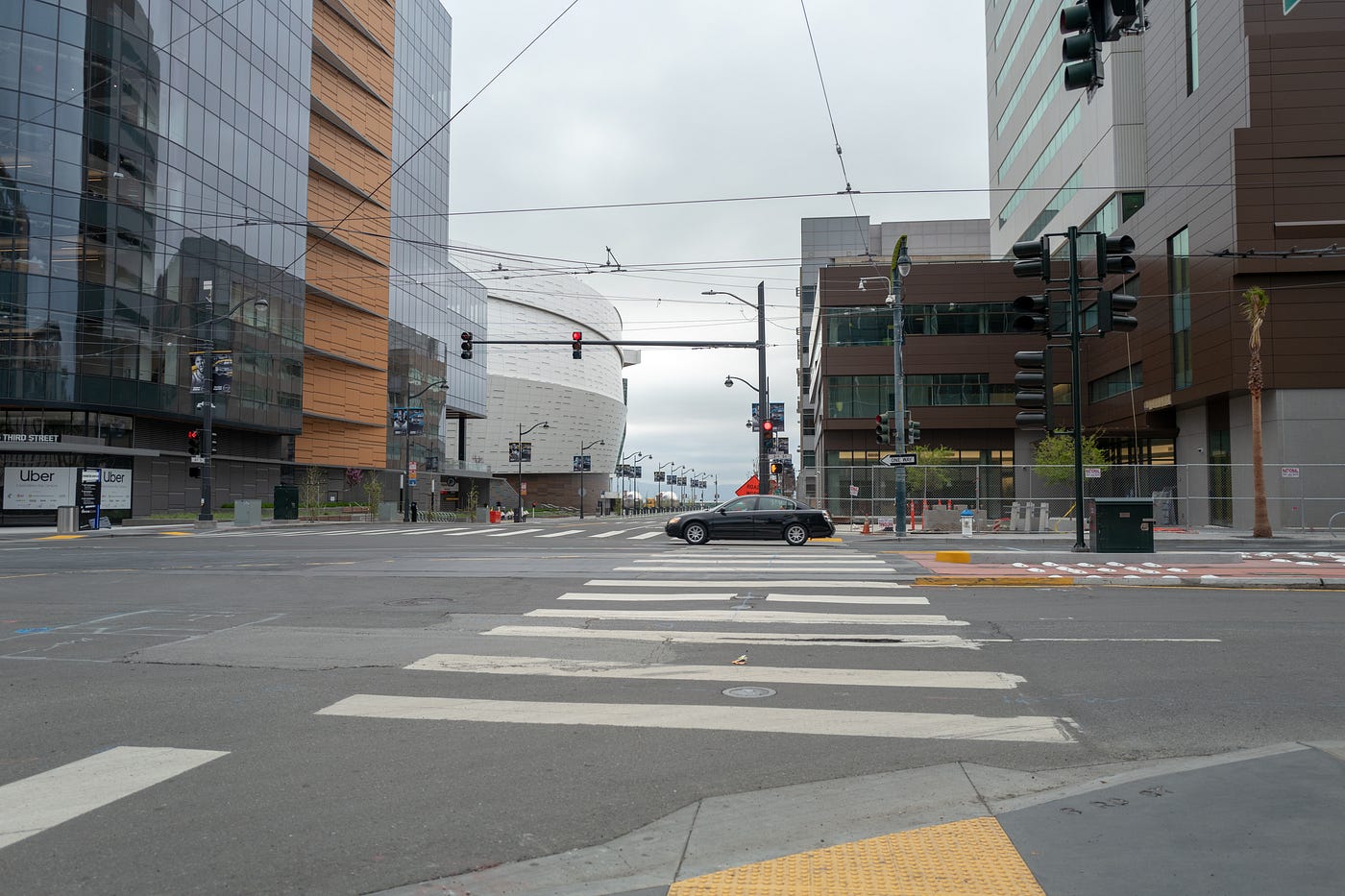
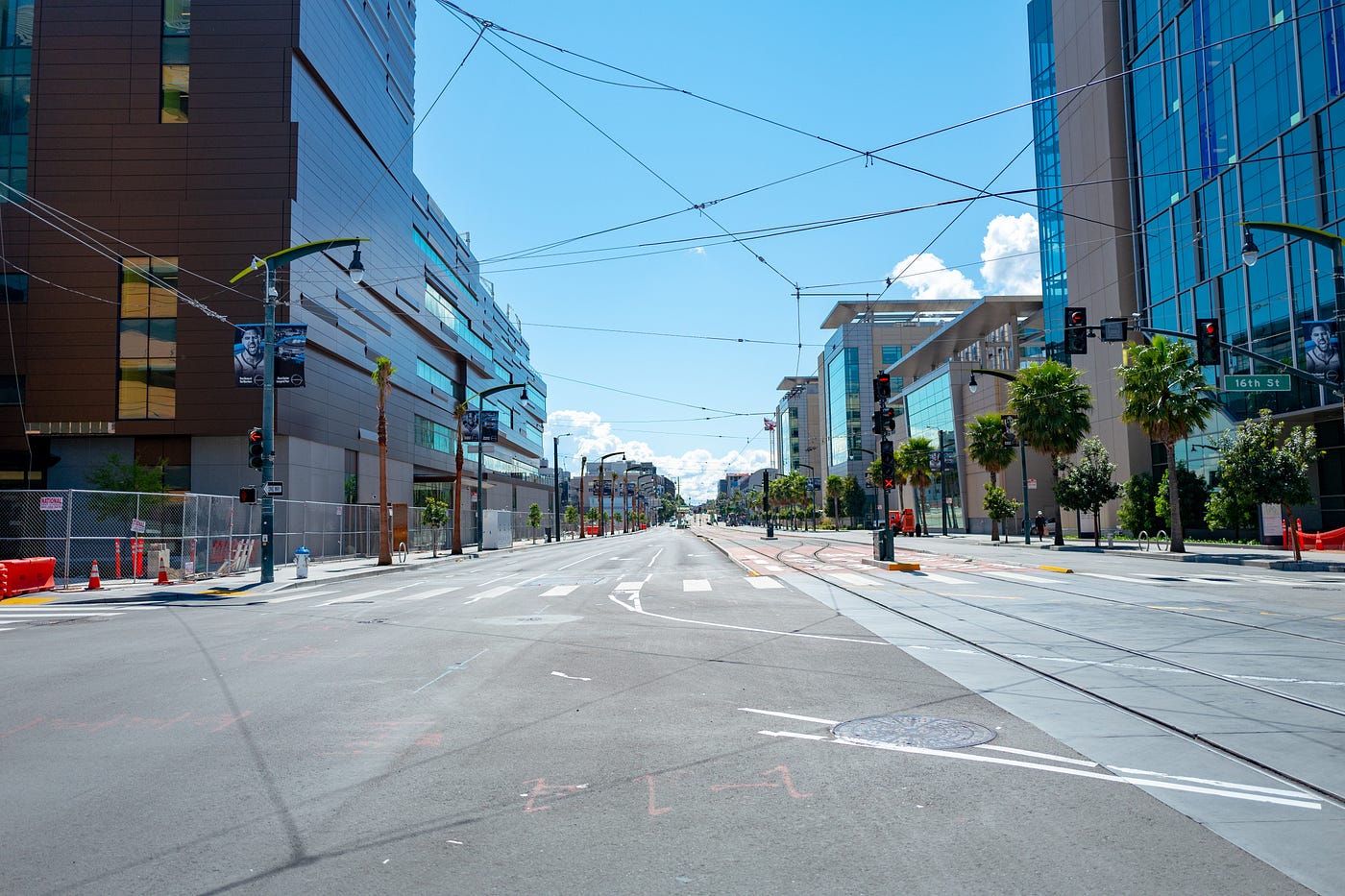
Walking through the city, I now find myself feeling like the protagonist in Bob Dylan’s “Talkin’ World War III Blues,” wandering around the “lonesome town” and wondering what the hell happened to normal life. Stores are shuttered, many boarded up. The few people out are wearing masks, giving an occasional weary nod as we avoid coming too close to each other.


For years, I’ve focused much of my time on shooting one specific neighborhood: Mission Bay. Mission Bay is a microcosm of many of the places and changes happening around the Bay Area. Once a literal dumping ground for landfill and construction debris, it transformed from a salt marsh into buildable land beginning in the late 1800s.
Initially an industrial district, it lay fallow for years until the University of California, San Francisco, built its flagship medical campus there. Soon after, the city chose it as the location for the Warriors’ new Chase Center (opened last year), and tech companies (including Uber) started using it to build new, glittering headquarters. I’ve watched — and photographed — as blank fields transformed into skyscrapers and entertainment complexes. In a few short years (between 2016 and 2019), the neighborhood changed so much that it’s now unrecognizable.
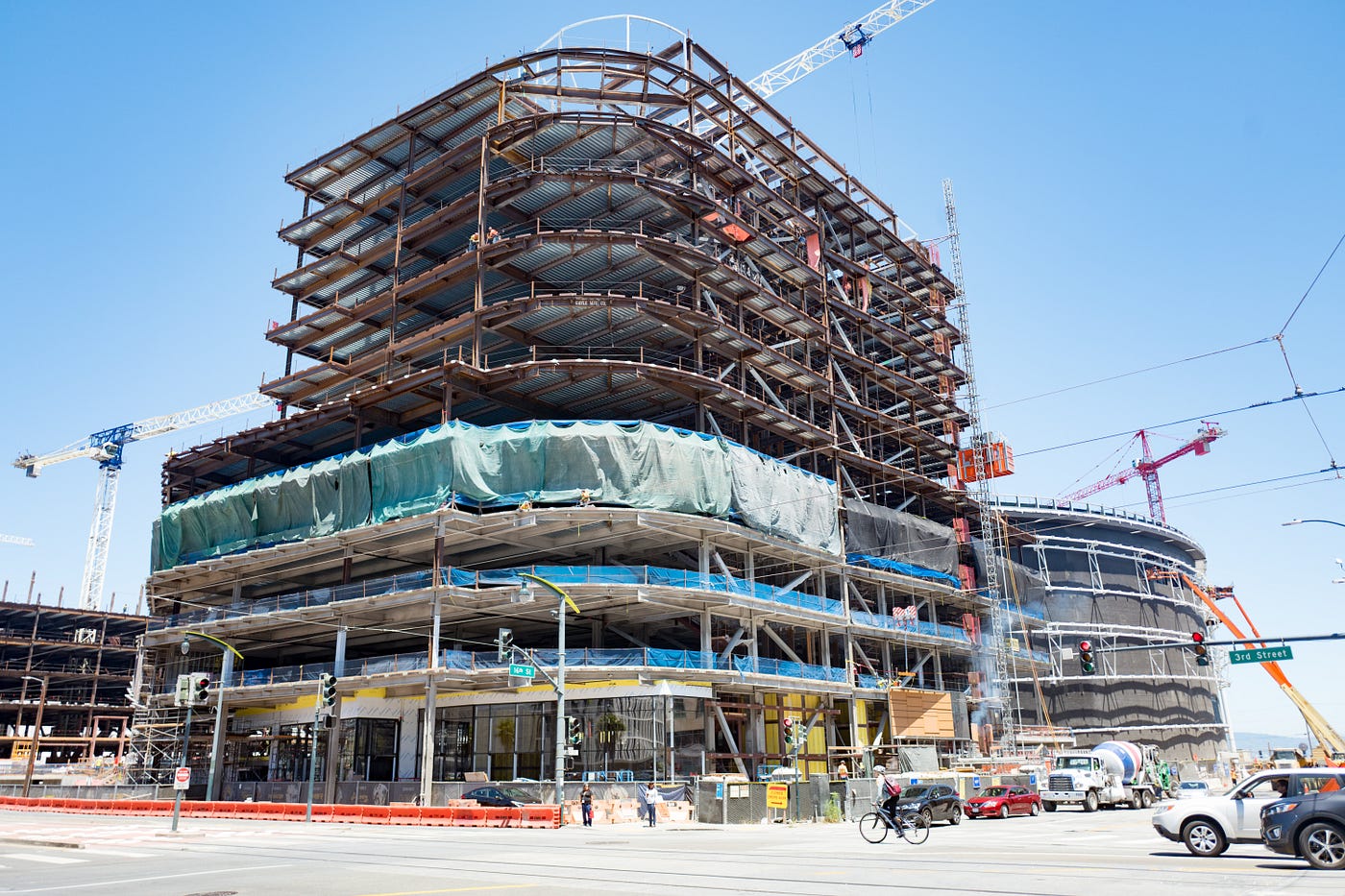
Today, it’s unrecognizable again — as a ghost town. Construction on Uber’s headquarters is on hold, with signs printed on 8.5-by-11-inch paper ordering contractors to stop showing up for work.

UCSF’s newly opened, world-leading cancer hospital is only accessed through a rightly strict Covid-19 screening checkpoint — the kind we should have established at San Francisco International Airport months ago. The Chase Center and its multimillion-dollar shopping complex are deserted, with a giant Jumbotron flashing ads for concerts almost certain to be canceled.
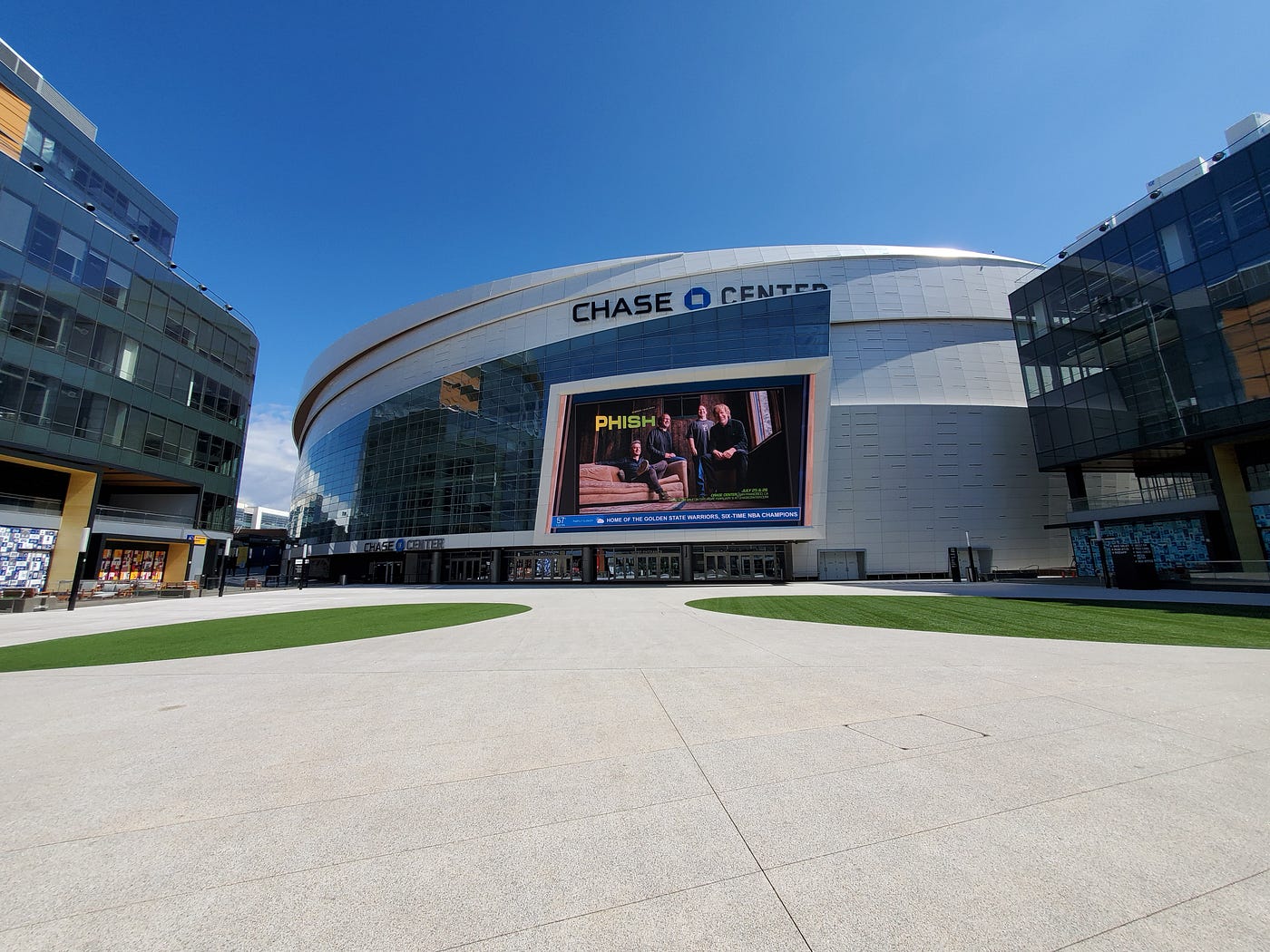
MUNI trains still obligingly roll through the empty streets, carrying a few workers spaced half a car’s length apart. Most businesses and restaurants are closed.

One Starbucks — an oasis, the barista tells me, for the emergency personnel and police officers who still have to work — has created a colorful banner of printed letters reading “We are open” and pasted it on a nearby wall. It feels like a vibrant third-grade art project, heralding in the apocalypse.
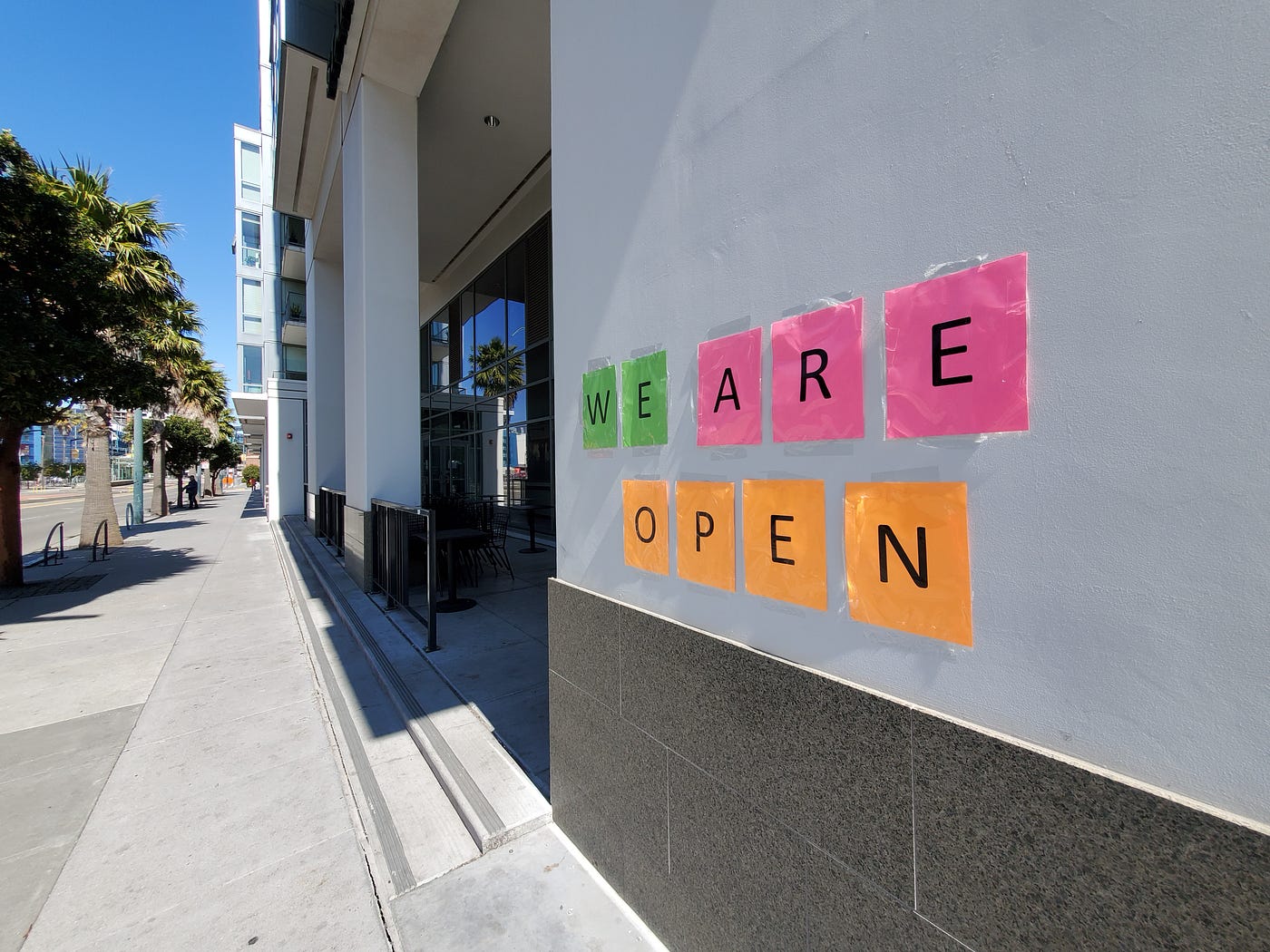
Inside the cafe, though, there’s a kind of cheerful, defiant resilience. Yes, the chairs are stacked on tables and cordoned off behind barriers (only takeout is allowed). Yes, the walls are plastered with weirdly Soviet-looking dispatches from headquarters, touting Starbucks’ commitment to its community and decision to remain open. And yes, you probably won’t have your normal choice of almond, soy, or oat milk. But there’s still a smiling person behind the counter, clad in a green apron, ready to take your drink order while a carefully chosen mix of inoffensive, slightly offbeat cafe music plays in the background.
You get the impression that zombies could be crawling the streets outside, and there’d still be a smiling barista standing there ready to serve you your half-caf macchiato.
It’s a strange response to a dire, world-threatening situation. But there’s something enormously comforting about the familiar, mundane monotony of the Starbucks. You get the impression that zombies could be crawling the streets outside, and there’d still be a smiling barista standing there ready to serve you your half-caf macchiato.
In many ways, that’s our city, distilled to its essence. In the face of often impossible situations — normally a crushingly high cost of living and impossible housing market and today a global pandemic — we keep showing up, keep soldiering on, and somehow manage in the midst of everything to create an unlikely feeling of community and connectedness borne of shared experience and mutual love for this strange and wonderful place.
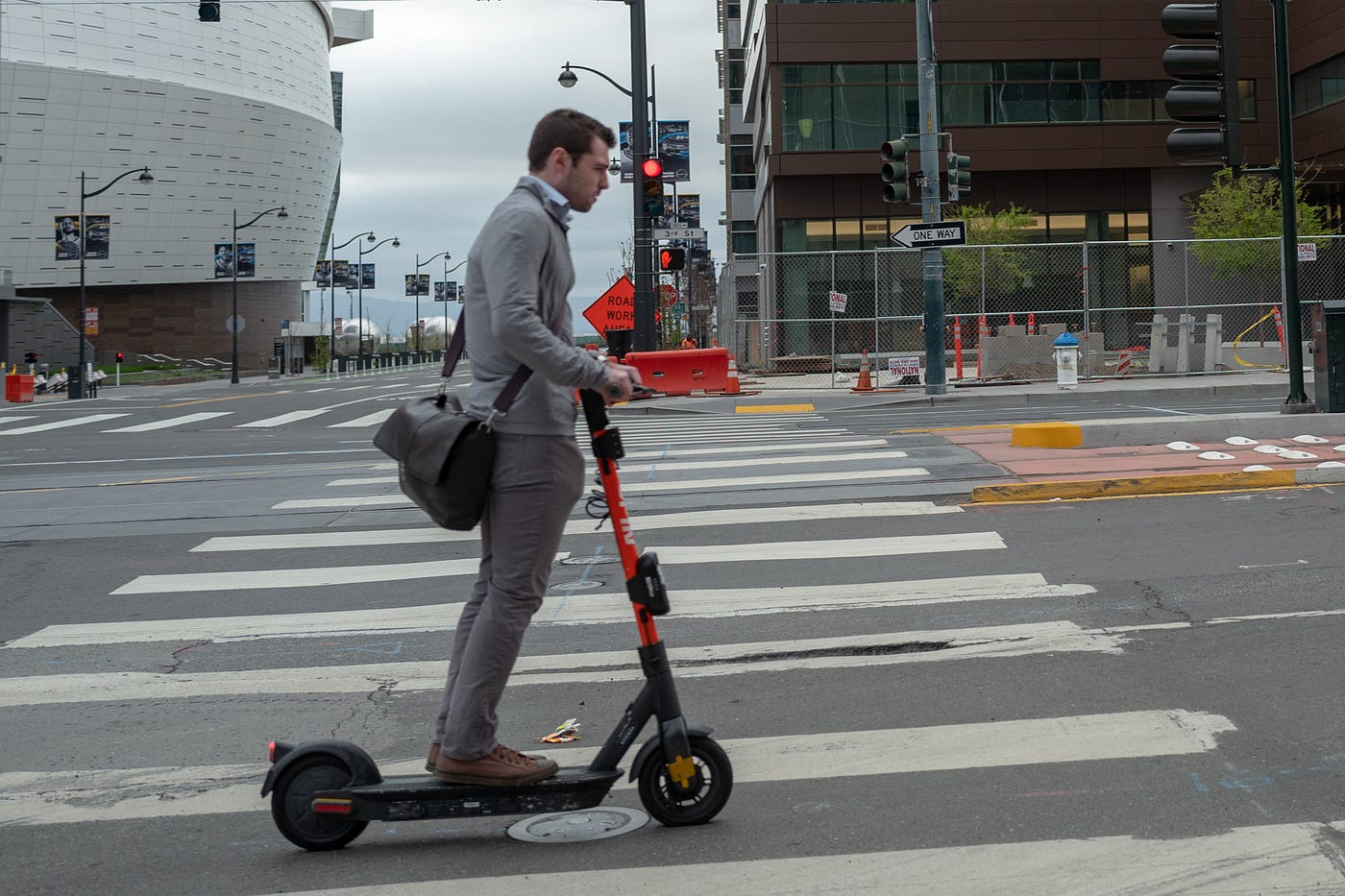
This feeling — this sense of commitment, reinvention, and solidarity — rings true nowhere more than the local businesses that have stayed open to continue serving the community. I saw it in the Italian restaurant on 16th Street that threw its doors wide open, covered its sidewalks in signs announcing its carry-out options, and blasted upbeat, clubby music to anyone passing by. It’s as good a “fuck you” to Covid-19 as I can imagine.

And the citizens who are staying indoors have done so with grace and San Francisco-style intensity, too. Most of our tech community is now working from their kitchen tables or couches. Those with kids have found ways to stay connected with Zoom playdates and drive-by birthday parties. And our regional obsession with self-improvement hasn’t faded one bit — the Atlantic reports that dumbbells and other quarantine-friendly exercise equipment is in shorter supply than toilet paper.
In many ways, our region’s wealth is a major asset right now. Many of our workers are in the knowledge economy and can productively work from home. The people I worry about most are those in our massive service and gig economy, which was thriving (though fraught) before the crisis. As Covid-19 unfolded, I got a message from an Uber driver who said they hoped to get the virus. Their fares were down 80%, and as an independent contractor, Uber would only compensate them if they actually got sick. That’s a terrible calculus to have to make and one that’s likely playing out for many across our region.
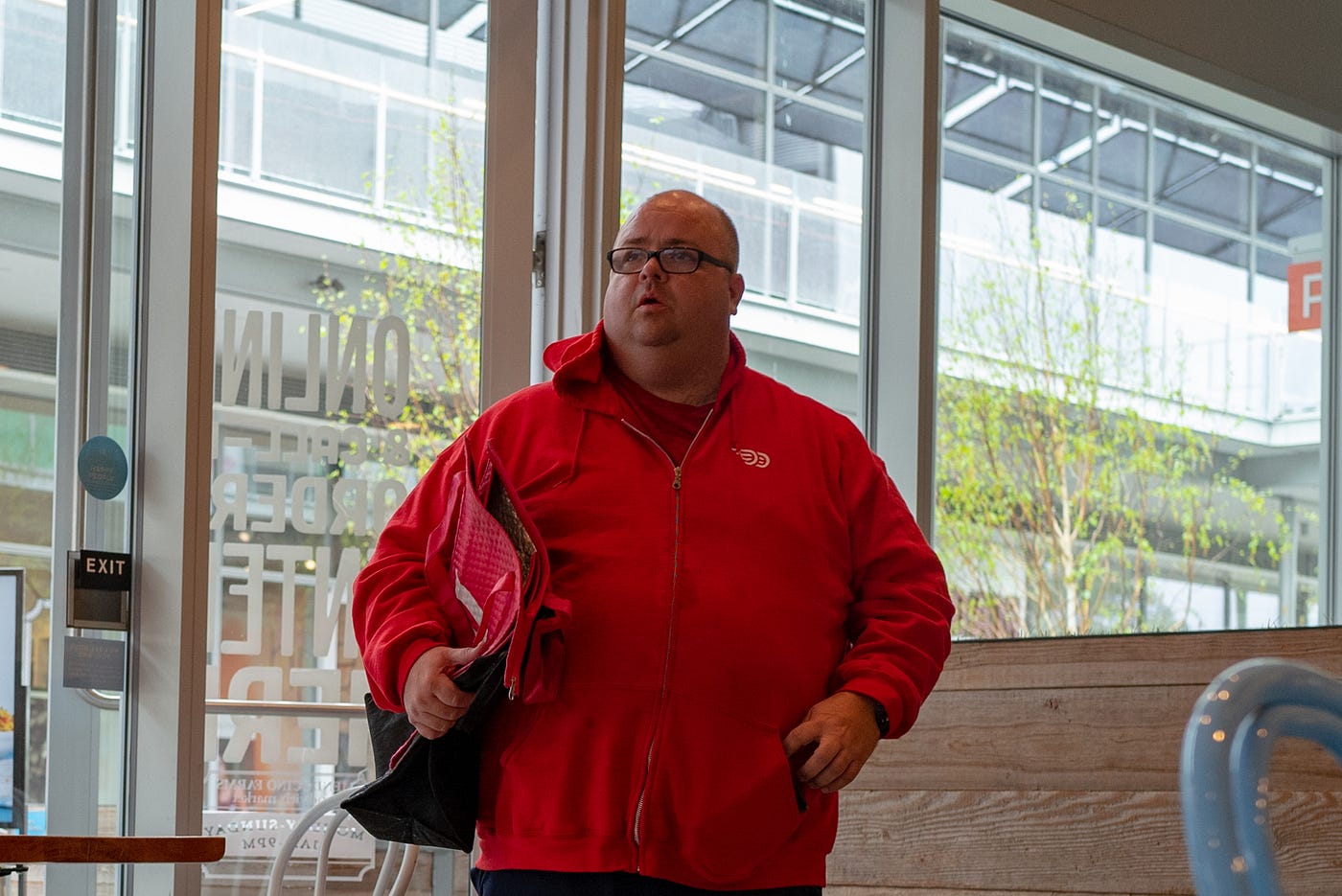
At the same time, though, the strongest impression I get from wandering around our empty streets is one of community and resilience. The very act of being indoors right now — of obeying, or even embracing, the need to social distance — is a kind of collective action, a community-wide commitment to protect our most vulnerable.
Are we perfect? No. Parks, trails, and beaches have been more crowded than they should be, with some closing as a result. But overall, I see a community that’s banding together by being alone, keeping its culture and values intact, and trying its best to weather this unprecedented storm. I see neighbors sharing food and supplies, socialites organizing massively successful mask and respirator drives, and everyone from first responders to grocery store clerks keeping our region running, often at incalculable risk to themselves (and frequently underpaid to do so).
I’ve never been more terrified to walk our streets. But I’ve never been prouder to call the Bay Area home.







